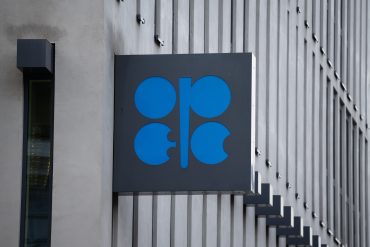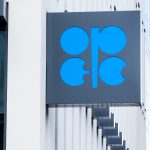
- Brent Crude
- Oil Markets
- OPEC+
OPEC+ Raises Oil Output by 137,000 Barrels for November
5 minute read

Global oil markets respond to OPEC+ production boost while tech companies brace for higher transportation costs
Key Takeaways
- OPEC+ increases output by 137,000 bpd starting in November, marking a cautious approach amid oversupply concerns and bringing 2024 total increases to over 2.7 million bpd
- Oil prices rise 1.5% following the announcement, with Brent crude reaching $65.45 and WTI climbing to $61.78 as markets respond to the modest increase
- Tech sector faces supply chain pressure as higher oil prices threaten to increase transportation costs by up to 3% for companies with significant logistics operations
Introduction
OPEC+ delivers a measured response to market pressures with a modest oil output increase that sends ripples across global energy markets and tech supply chains. The oil cartel agrees to raise production by 137,000 barrels per day starting in November, mirroring October’s increase while rejecting rumors of a larger 500,000 bpd hike.
The decision reflects careful balancing between market share recovery and price stability. Oil prices respond immediately, with both Brent crude and WTI posting gains that signal renewed confidence in controlled supply management.
Key Developments
The November output adjustment represents OPEC+’s continued strategy to reclaim market share from non-OPEC producers while maintaining pricing discipline. According to CNBC, this year’s cumulative increases now exceed 2.7 million bpd, equivalent to approximately 2.5% of global demand.
Internal tensions between key members shaped the final decision. Russia advocates for restraint due to sanctions-related production constraints and price pressure concerns, while Saudi Arabia initially pushes for larger increases. The compromise reflects both nations’ recognition of current market dynamics.
OPEC+ justifies its cautious approach by citing steady global economic conditions and healthy market fundamentals, including persistently low oil inventories. The group schedules its next critical meeting for November 2 to reassess output strategies based on evolving demand signals.
Market Impact
Oil markets respond positively to the measured approach, with Brent crude gaining 1.5% to reach $65.45 per barrel. WTI crude follows suit, climbing to $61.78 as traders interpret the modest increase as supportive of price stability.
The Nasdaq index shows initial negative reaction to oil price increases, reflecting investor concerns about rising input costs across technology sectors. Energy-intensive industries begin factoring higher operational expenses into forward guidance and strategic planning.
Currency markets register the oil price movement, with energy-importing nations seeing modest pressure on their currencies. Commodity-linked currencies strengthen as energy export revenues improve with higher pricing.
Strategic Insights
Each output increase depletes OPEC+’s spare capacity, potentially constraining the group’s ability to respond to future supply shocks. This structural limitation forces more strategic decision-making around production adjustments and market intervention timing.
The energy transition accelerates as higher oil prices make renewable alternatives more economically attractive. Companies across sectors reassess energy strategies, with particular focus on reducing dependence on volatile fossil fuel pricing.
Supply chain managers face immediate pressure to optimize logistics networks and explore alternative transportation solutions. The International Energy Agency notes that energy costs represent up to 15% of total operating expenses for data centers, prompting cloud service providers to prioritize energy-efficient technologies.
Expert Opinions and Data
AGL Energy demonstrates practical energy transition solutions through successful trials at their Bayswater generator, enabling coal units to shut down during peak solar production periods. Len McLachlan, AGL’s head of operations at Bayswater, leads this groundbreaking “two-shifting” initiative that allows units to cycle offline and return within 12 hours.
Industry analysts highlight the dual impact of rising oil prices on technology sectors. “This is a wake-up call for the tech sector to double down on sustainability and supply chain resilience,” notes a leading tech industry analyst. Energy market strategists emphasize the innovation catalyst effect, explaining that higher oil prices accelerate investments in green technologies despite short-term cost pressures.
Logistics sector data reveals that fuel costs account for roughly 30% of total freight expenses, suggesting that a 10% oil price increase could raise shipping costs by 3% or more. This dynamic particularly affects hardware manufacturers with extensive global distribution networks.
Conclusion
OPEC+’s measured output increase successfully balances market share objectives with price stability concerns, though it reduces the group’s future flexibility to address supply disruptions. The decision accelerates existing trends toward energy diversification and supply chain optimization across multiple industries.
Technology companies face immediate cost pressures while simultaneously gaining stronger incentives to invest in renewable energy infrastructure and logistics innovation. The energy sector’s transition toward renewable integration continues gaining momentum as traditional producers adapt their operational models to accommodate clean energy sources.







